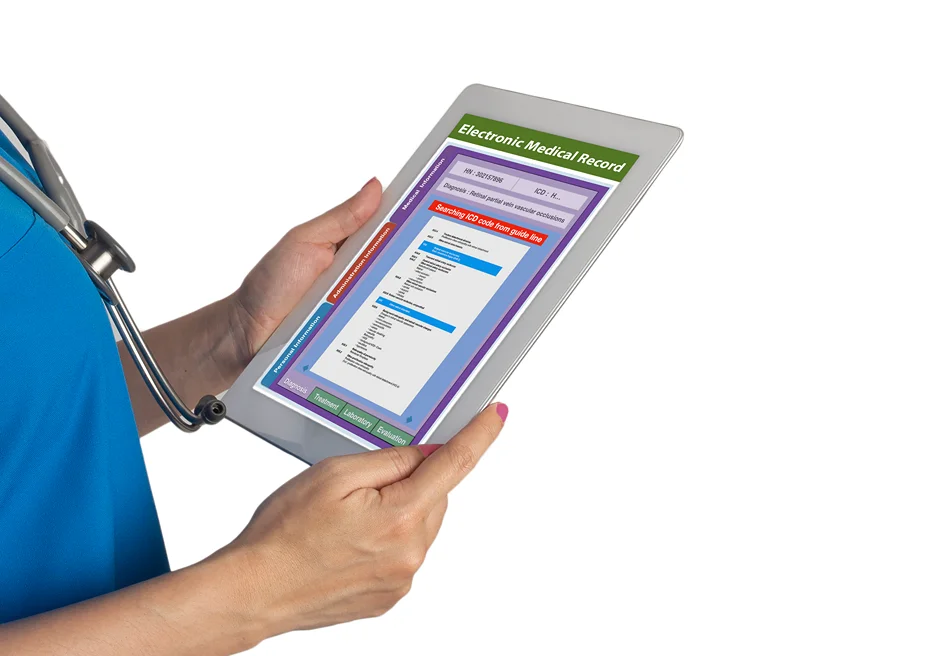Capture the power of standardized nursing language in electronic medical records to elevate patient care and unlock data-driven insights.
Incorporating standardized nursing language in electronic medical records is crucial for effective communication among healthcare providers and quality patient care.
Standardized nursing language ensures that healthcare providers speak the same language, facilitating coordination of care and accurate documentation of nursing interventions.
Currently, only a significant number of respondents use standardized terminologies, highlighting the need for improved adoption and integration.
The benefits of standardized nursing language include:
By adopting standardized nursing language, healthcare providers can enhance patient care and outcomes.

Standardized nursing language is essential for consistent communication among healthcare providers. When documenting patient care, using a common terminology guarantees accurate and consistent communication. This language is crucial in electronic medical records, ensuring accuracy and consistency in documenting patient assessments, interventions, and outcomes.
Thirteen standardized languages are recognized by the American Nurses Association (ANA). These languages are evaluated based on utility, validity, and reliability. They enable effective communication of actions and observations, leading to better coordination of care and improved patient outcomes.
Standardized nursing language facilitates data collection for evaluating nursing outcomes and supports professional development in nursing practice. By using standardized nursing language in electronic medical records, documentation is accurate, thorough, and consistent, ultimately leading to better patient care and improved healthcare outcomes.
Adopting standardized nursing language in electronic medical records enhances communication among healthcare providers, ensuring all caregivers are on the same page. This leads to better coordination of care, resulting in improved patient outcomes.
Standardized language facilitates the visibility of nursing interventions, making it easier to assess their effectiveness and make data-driven decisions.
Standardized language facilitates the assessment of nursing competency, supporting evidence-based outcomes. This contributes to better patient outcomes and more efficient healthcare delivery.
By leveraging standardized nursing language, healthcare providers can establish nursing standards and influence regulations guiding nursing practice.
Ultimately, adopting standardized nursing language in electronic medical records is a vital step towards enhancing patient care, improving communication, and advancing the nursing profession.
Nurses often face difficulties when adopting standardized nursing language in electronic medical records, hindering the effective implementation of this vital aspect of patient care.
To overcome these challenges, it's essential to address concerns about user-friendliness, knowledge, skills, and EHR usability.
To overcome implementation challenges, provide training and support for nursing staff to ensure user-friendliness.
Offer education and resources on standardized language to address knowledge and skills gaps.
Finally, improve electronic health record design and functionality to enhance EHR usability.
Standardized nursing language is crucial for ensuring accurate and consistent documentation of nursing care. By using agreed-upon terminologies, healthcare providers can facilitate communication, improve patient care, and enhance data collection for evaluating nursing interventions.
Standardized Nursing Language: Current State and Importance
Only half of respondents in a recent study reported using standardized terminologies in their nursing documentation, indicating a significant gap in the adoption of standardized nursing language.
Limited Support for Standardized Language in Electronic Health Records
Nursing staff reported feeling moderately supported by electronic health records regarding standardized language, which raises concerns about the completeness and relevance of information in nursing documentation.
There is no clear link between the level of support and the use of specific standardized terminologies.
Barriers to Effective Use of Standardized Language
Challenges related to knowledge, skills, and usability of electronic health records hinder the effective use of standardized language.
Importance of Standardized Language in Nursing Documentation
Accurate and consistent nursing documentation is crucial, and adopting standardized language facilitates communication among healthcare providers, improves patient care, and enhances data collection for evaluating nursing interventions.
As standardized nursing language integration in electronic medical records continues to evolve, three key advancements are expected: expanded recognition, enhanced integration, and improved interoperability.
Recognition will increase as more healthcare providers adopt ANA-approved terminologies in electronic medical records, facilitating seamless communication among healthcare providers. For instance, this could lead to the inclusion of additional standardized languages beyond the current 13 recognized languages, enhancing data collection and analysis.
Integration will be enhanced as technology advances, enabling the incorporation of more standardized languages into electronic health systems. This will facilitate the exchange of patient data across healthcare settings, ultimately improving patient care.
Interoperability will improve as electronic health records using standardized nursing languages become more widespread, allowing for seamless data exchange between healthcare providers.
Research opportunities abound to explore the impact of standardized nursing languages on patient outcomes and healthcare quality within electronic medical records.
Collaboration is key to drive the widespread adoption of standardized nursing languages in electronic medical records. Nursing professionals, software vendors, and healthcare institutions must work together to achieve this goal and ultimately improve patient care and healthcare quality.

Standardized Nursing Language Empowers Patients
By using standardized nursing language in electronic medical records, patients can take a more active role in their care.
Clear and consistent communication among healthcare providers enables patients to make informed decisions about their health. This standardization allows patients to better understand their treatment plans and participate more effectively in their care.
Improved Continuity of Care
With a structured framework for documenting nursing diagnoses, interventions, and outcomes, patients receive more thorough and coordinated care that aligns with best practices in nursing.
Standardized language guarantees that all healthcare providers are on the same page, ensuring improved continuity of care.
Better Health Outcomes
By promoting standardized language in EMRs, patients receive better care that's tailored to their specific needs.
As a patient, you'll be empowered to take a more proactive role in your healthcare, leading to better health outcomes and improved quality of life.
Standardized Nursing Language Improves Patient Care
Using standardized nursing language in electronic medical records enables nurses to practice evidence-based care more efficiently. This is because standardized language allows nurses to leverage recognized terminologies to inform their decisions and improve patient outcomes.
Accurate Data Collection: Standardized documentation ensures consistency in data collection, which leads to more accurate analysis and identification of trends.
Enhanced Coordination of Care: Consistent terminology selection enhances coordination of care and patient outcomes by providing a common language for healthcare providers.
Evidence-Based Practice: Recognized terminologies support evidence-based nursing practice by providing a framework for nurses to make informed decisions.
Streamlined Nursing Practice: Standardized language facilitates the assessment of nursing competency by providing a clear understanding of a nurse's skills and knowledge.